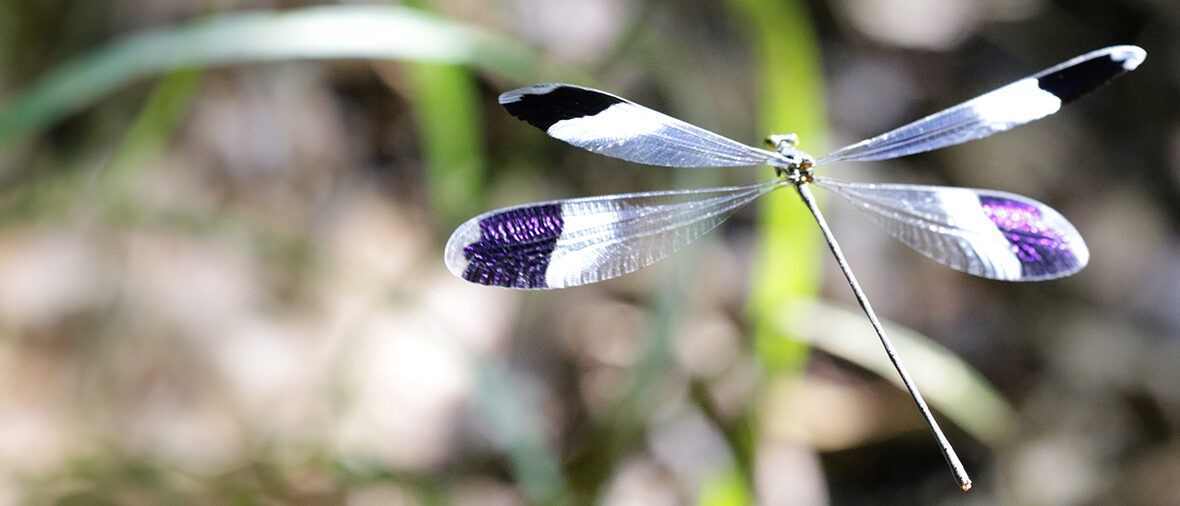
The blue-winged helicopter dragonfly are touted as having the largest wingspan of any known dragonfly. They hail from Central America and South America. Even though they face the threats of habitat loss and destruction at the hands of residential and commercial developments, farming, ranching, and logging, these giants are still listed as Least Concern by the IUCN. Their population trend is unknown.
First the Stats…
Scientific name: Megaloprepus caerulatus
Length: Up to 7.5 inches
Wingspan: Up to 7.48 inches
Lifespan: Up to 7 months, as an adult
Now on to the Facts!
1.) Adults feed on orb-weaver spiders that they pull directly from their webs. Naiads (nymphs) prey on various invertebrates, mosquito larvae, tadpoles and each other.
2.) Eggs are laid in water that collects in tree holes.
3.) The male guards the tree hole from predators until the eggs hatch.
4.) Their eggs hatch in a minimum of 18 days, but hatching time can be spread out over the course of up to 6 months. It is thought that this spread out hatching time is an evolutionary adaptation to avoid predation from others or other nymphs.
5.) The naiads are ferociously carnivorous and will attempt to eat anything that wiggles or moves within their watery habitat.
But wait, there’s more on the blue-winged helicopter dragonfly!
6.) Up to 13 females may oviposit (lay eggs) in a single large tree hole, laying upwards of 250 eggs each, but the number of naiads are drastically reduced due to cannibalism.
7.) When preying on spiders, they look for webs as a tell tale sign of potential food. The dragonfly will hover in front of the web until it finds the spider. Then it will fly backwards and quickly shoot forward again to grab the spider in its forelegs. Then it backs away and lands to eat the spider, removing the legs before eating the body.
Did you know…?
Territorial males drive away other males from their territory by chasing and sometimes even ramming them.
8.) These dragonflies have poor flight endurance and are only capable of flying up to .62 mile before having to rest.
9.) Due to this fact, they have limited dispersal capabilities and are thus more likely to be impacted by habitat fragmentation.
10.) Because they consume so many vector carrying mosquitoes as nymphs, the loss of these dragonflies could have a severely detrimental affect on humans do to mosquito population explosions.
Now a Short Blue-Winged Helicopter Dragonfly Video!
This video talks about the general biology of dragonflies.
Be sure to share & comment below! Also, check out the Critter Science YouTube channel. Videos added regularly!
Want to suggest a critter for me to write about? Let me know here.
Some source material acquired from: Wikipedia & IUCN
Photo credit: iNaturalist



